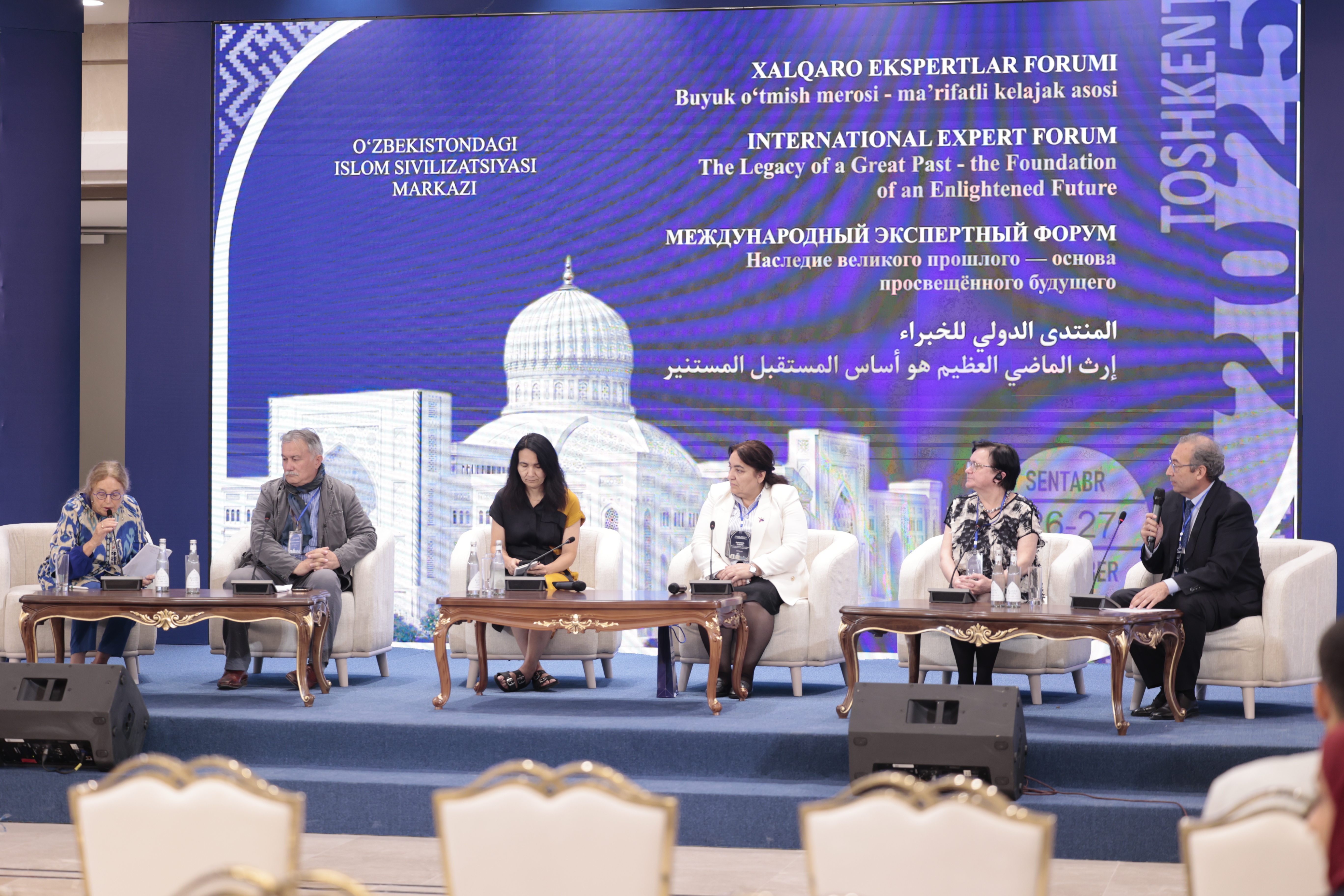“Under the initiative of President Shavkat Mirziyoyev, Uzbekistan is reviving the lost pages of its history” – Ayisima Miersulitan
🔴 The Baburid Manuscripts Are Reuniting
🔴 The Album of Jahangir: Lost Pages of History Returning Home
Although the megaproject the Center for Islamic Civilization built in Tashkent has not yet been officially opened to the public, it has already gained wide international recognition. At the recently held International Expert Forum titled “Heritage of the Great Past – Foundation of an Enlightened Future,” more than 100 foreign scholars from around 20 countries emphasized that the establishment of the Center is a true gift from President Shavkat Mirziyoyev to the Islamic world. According to international expert Ayisima Miersulitan, a researcher at the East Asia Department of the Berlin State Library, the Center for Islamic Civilization in Uzbekistan is showcasing a new image of Uzbekistan to the world.
The forum participants also visited the museum’s exhibitions, sharing their impressions, suggestions, and expert evaluations.

In particular, Ayisima Miersulitan noted that the Baburids were a dynasty that left a significant mark not only on the history of India but also on the national identity of the Uzbek people.
“Zahiriddin Muhammad Babur and his successors Humayun, Akbar, Jahangir, and Shah Jahan established their empire in India, yet they were a Turkic dynasty, the descendants of our ancestors. Therefore, their cultural heritage and political vision form an inseparable part of Uzbek history.”
The priceless manuscripts, artistic masterpieces, and architectural marvels created during the Baburid era are preserved today in museums around the world. They are not only treasures of India but part of the shared cultural wealth of all humankind.
The idea of the Second Renaissance reflects this very concept a return to history as a means of renewal, and the reassertion of national identity on the global stage. Through the initiative of President Shavkat Mirziyoyev, Uzbekistan is reviving this great historical chapter. The Baburids, in this context, serve as a spiritual bridge linking the past with the present.
In your opinion, which directions of international cooperation in studying the Baburids hold the greatest potential for the Center for Islamic Civilization?
Since my specialization is in the field of library science, I consider the study of manuscripts to be the most crucial direction. Searching for manuscripts, albums, and collections created during the Baburids period, studying them, and presenting them to the public through facsimile editions is an urgent task of our time.
At present, I am working on a project dedicated to the Album of Jahangir. Among the ancient pages scattered around the world, there are still many examples that have not been sufficiently studied scientifically. Interestingly, although some of these manuscripts are classified as “Persian” or “Indian,” they are in fact written in Chagatai that is, in Turkic. This is our cultural trace, our linguistic heritage.
Recently, you announced the discovery in Berlin of an album containing the ghazals of Navoi and Baysunghur Mirza. Could you tell us more about this source?
We call this work The Album of Jahangir. Twenty-six of its pages are currently preserved in the Berlin Library, while the others are dispersed across England and the United States. If all the pages were gathered together, the collection would consist of approximately 150 folios.
The album includes not only miniatures but also accompanying poetic excerpts and couplets taken from divans. On some pages, one can find verses by Husayn Bayqaro or Alisher Navoi. From the perspectives of linguistics, paleography, and cultural studies, these manuscripts are invaluable.
We are currently analyzing each page in detail, scientifically reclassifying its language, script, and content. This work is not only of scholarly importance but also of great aesthetic significance, for every page is imbued with artistic beauty and creative spirit.
Will you present such rare manuscripts or facsimiles to the Center?
We are now in the process of collecting the scattered pages of the Album of Jahangir from libraries around the world and plan to prepare a complete facsimile edition. The project consists of two stages:
- Creating the facsimile copies;
- Later publishing a two-volume edition containing annotations, translations, and scholarly analyses.
At present, negotiations are underway with the Golestan Palace in Iran, which holds about 40 pages. Our goal is to reunite all the dispersed parts of the album worldwide and restore a single, complete historical collection.
In which foreign archives, including in Germany, are there still undiscovered materials related to the Baburids?
It is difficult to say precisely what is housed in which library at this moment. However, if we successfully implement the Album of Jahangir project, other countries will also show interest in opening their archives.
The most important thing is to build academic and cultural trust. If we demonstrate scholarly integrity and aesthetic sensitivity, others will respond by saying, “We, too, have part of the Baburids heritage,” and open their doors. That is the most beautiful way to restore history.
Most read

Over 100 experts from more than 20 countries of the world are in Tashkent!

The Center for Islamic Civilization – a global platform leading towards enlightenment

The museum of the Center for Islamic Civilization in Uzbekistan has been further enriched: unique artifacts from different parts of the world have been presented as gifts












